
Making Space at the Table
NAP Contemporary’s group show, The Elephant Table, platforms six artists and voices—creating chaos, connection and conversation.
In Kitchen Creations, Art Guide talks to artists about cooking. For the second part of this series, Sheridan Hart spoke to Bo Wong, Mike Bianco and Mark Valenzuela about channelling their energies into food and drinks, and they shared some of their favourite recipes.
As lockdown shrunk the scope of daily activity, many of us become re-engaged with creative arenas like the kitchen, garden and shed. For artists, the enforced overlap of studio with home invites consideration of the extent to which making processes like brewing, preserving, propagation, knitting and mending are continuous with art making.
Based in Denmark (a coastal town in Western Australia), photographer Bo Wong routinely drove 500km to Perth to shoot architecture and art, and bunk in her caravan, Lemon Delicious. Then regional restrictions grounded her family. She sat in her home office and cancelled months’ worth of bookings. “The empty calendar was frightening,” she remembers, “but beautiful.”
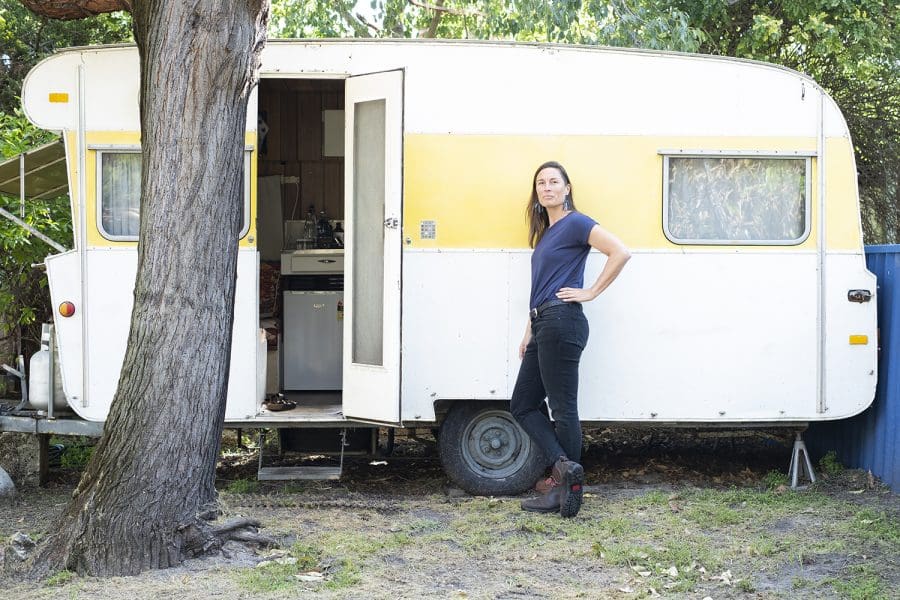
Lockdown coincided with the launch of Soul Traders; a podcast Wong produces with marketing strategist Amy Snoekstra. Their audience was homebound, nursing an enormous appetite for digital content. The timing was “incredible,” Wong explains, “To continue researching and discussing my industry was a lifeline.” The conversational episodes address the idiosyncrasies of creative small businesses; including the isolation of freelancers. “Many artists work alone, with no organisation or policy to rely on,” says Wong, “so it’s really important to bolster each other.”
In lockdown, Wong lavished attention on her vegetables, lit the fire and swam in the Indian Ocean. “It was an opportunity to consolidate around home,” she says. Accordingly, she felt the implications of her family’s food choices intensify. Her rigorous “aspirationally vegan” diet fell away in favour of heartiness and locality. All this took savoury form in two items: a kangaroo and an industrial mincer.
Bo’s partner Ricky butchered the animal, filling the obligatory second freezer with mince and cuts labelled ‘curry’ or ‘stir-fry’ according to toughness. “Like many families, we experienced stress over income, travel, online schooling. I wanted to make it a good time for the kids and,” she laughs, “I addressed that with comfort food. Instead of shepherd’s pie made from lentils and sweet potato, we had roo mince, potatoes and cheese. The kids were stoked.” Plundered by city panic-buyers, Denmark’s supermarkets felt shortages for months. With no prospect of lentils for weekly dahl, Wong’s son Felix was the first to offer to defrost some homemade mince.
Lean, ruby-red and minerally, kangaroo is a fine ingredient for those who prefer wild-caught meat and sturdy flavour. Wong prepares “classic spag-bol, fried rice, stir-frys,” but the true currency of her repertoire is the pasty: golden parcels of homegrown veg and mince baked daily for school lunches. The pasty’s charm is its place in a cycle: pastoralists cull kangaroos when they observe the mob overpopulating and becoming skinny. If the meat is eaten locally, untold wastage, packaging and distribution are circumvented. Felix now assists his father in the “gratefulness and ceremony of preparing the roo,” says Wong. “It closes the loop.”
For Perth-based artist and lecturer Mike Bianco, art and food have existed on the same continuum since 2008. “I’m a survivor of the GFC,” he explains. Weathering the crisis in the remote desert of Marfa, Texas, he “got serious about finding ways to live well in resource-constrained conditions.” Today, Bianco’s conflation of making, sustenance and nature as practice includes growing mushrooms in the bath, keeping bees and home-cured charcuterie.
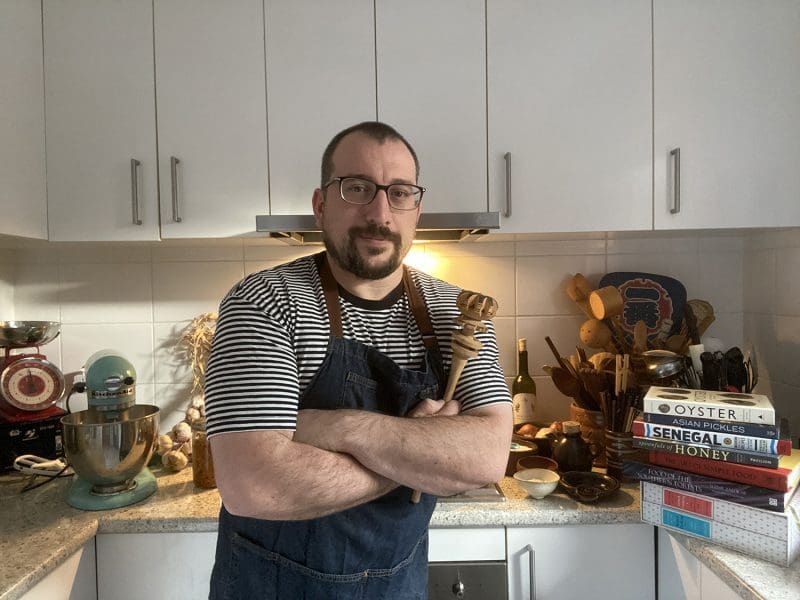
When Covid-19 struck, Bianco watched as consumer conveniences faltered, revealing a cooking skill deficit. “We saw people panicking in front of empty pasta aisles. We were able to calmly buy the semolina that nobody else knew what to do with and make our own. It was traumatic to see so many people feeling lost and unprepared.” Ironically, it was fearful buying itself that caused shortages; Australian supply remained robust. Meanwhile, “pandemic cooking” proliferated. “Social media depends on fads, whereas food practice is ongoing,” says Bianco. “It must be self-motivated and accepting of failure. If this interest fades, I fear a silver lining to this crisis could be lost.”
In lockdown, Bianco has been formulating a Sweet Community Vermouth; one to equal his aromatic memories of Manhattans past. “Vermouth is open to a kind of gastronomic poetics,” he says. “You always need wormwood, but you can vary the other botanicals to say something about the herbs in your garden.” The subtlety of vermouth preparation belies its history of parochial specificity; the recipe Bianco acquired from Raeapteek (an Estonian pharmacy established in 1422) is as sworn-by and singular as a floral Chambéry or bitter Punt e Mes. “Even the term ‘spirits’ points to the metaphysical properties that alcohol can have!”
Bianco’s latest project, the Free+Eco Oyster Bar, was developed on residency at ArtsHouse Melbourne. The artist shucked rare and familiar oysters for passers-by, while they enjoyed an installation imagining how bathroom waste might form an algal fuel that would fatten that most slippery and brackish delicacy.
In Latin, hospes (the root of our word hospitality)refers to both host and guest, and likewise Bianco brooks no delineation between guest, audience, food, art, table or gallery. All clot together through generosity and discourse: “Sharing food is about having a quality experience with community: I’m happy to wait for it – it’ll make drinks all the more celebratory!”
Before Covid-19, Mark Valenzuela split his time between studio sabbaticals in Adelaide, where he often works with ceramics, and lively exhibition seasons in the Philippines, where he was born. With travel suspended and deadlines effaced, the artist is in the midst of a rare, unfettered mode of experimentation, with room to foment intent, error and whim in equal measure. “It reminds me of being in Dumaguete years ago,” he says. “I would explore the mountains and dig for clay. It’s pure making.”
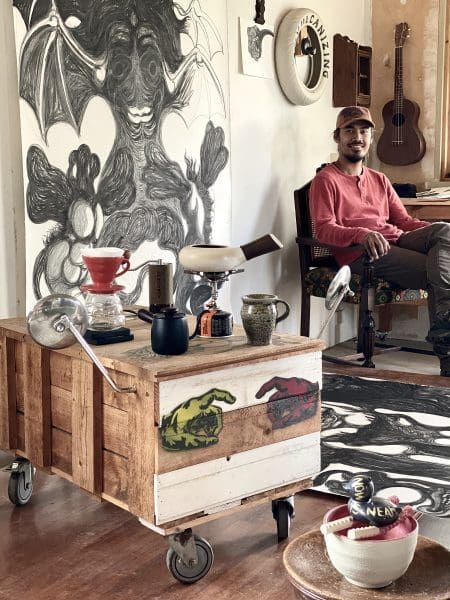
Through lockdown, Valenzuela spent as much time in the studio as at the chessboard, in the garden, and in the kitchen making coffee. “I consider practice to take in almost everything,” Valenzuela says. “Ideas come in all parts of the day, while gardening, talking, drinking coffee. It’s part of the same thing.”
Valenzuela’s coffee infatuation began on residency in Jogjakarta, where studios sweltered amid the aroma of roasted beans. “There, everybody belongs in a collective, and practice is performed with coffee always nearby. It opened my thinking.” Valenzuela began to roast beans at home, transferring them from green and waxen to a deep satin brown with a Japanese stovetop pot. He favours beans from the Philippines, where the prevalence of micro-lot farming guarantees organic simplicity “by default.”
Chasing novel flavour notes and uniform temperatures, the artist has been developing a ceramic roasting drum. Valenzuela emphasises the similarities between coffee and clay: each requires time, heat and “acceptance of spontaneity; a blend of precision and feeling.” Caffeine hums beneath all these activities. Its power to induce focus is softened by Valenzuela’s brewing technique, a “balance of acidity and caffeine that drinks beautifully over four to six cups a day.”
For Valenzuela, whose work can be seen in the 2020 Adelaide Biennial of Australian Art: Monster Theatres, coffee is a communal ritual. His coffee cart, packed with cups and gadgetry, making the drink and its ensuing conversation mobile. “First you make something, and then almost as an indulgence, you take it to your audience to taste. Like with art, you satisfy yourself first.”
Bo’s Roo Pasties
Fry up some onions, garlic, roo mince and herbs – then add whatever vegetables are in the fridge or garden. Spinach, carrots, mushrooms and peas can all find a home in your unique pasty.
Get some pastry from the freezer or make your own – shortcrust or puff are both fine. Lay the cooked filling down on one corner of the pastry square and add fetta and/or ricotta if that floats your boat.
Fold the square into a triangle and squash the edges together with a fork.
You can, at this point, freeze the triangles as they are for another day and just cook what you’ll eat now.
Smother some olive oil on top and pop in the oven on a middle rack at a temperature of around 150-180C for about 10 or 20 minutes.
Take out of the oven when you’ve visually assessed that the golden brown-ness of the pastry is at optimum deliciousness.
Serve with some chutney, chilli jam or any condiment you’re currently addicted to.
Cut in half, pop in your kid’s lunchbox and feel smug for the rest of the day!
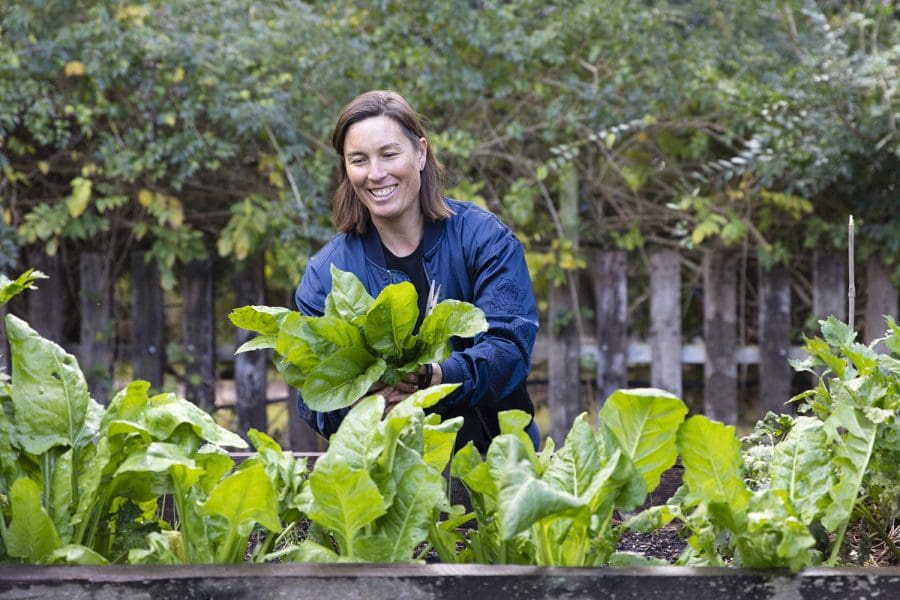
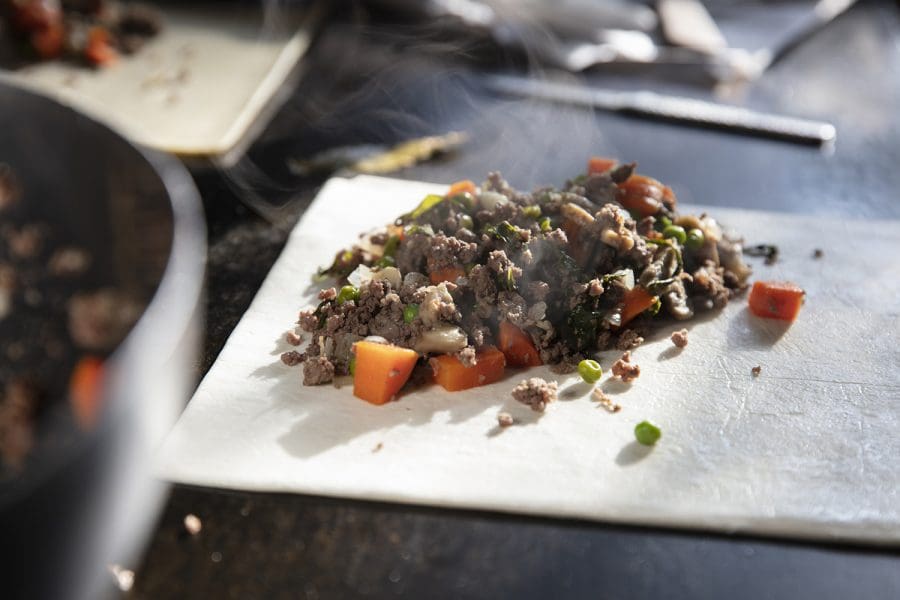

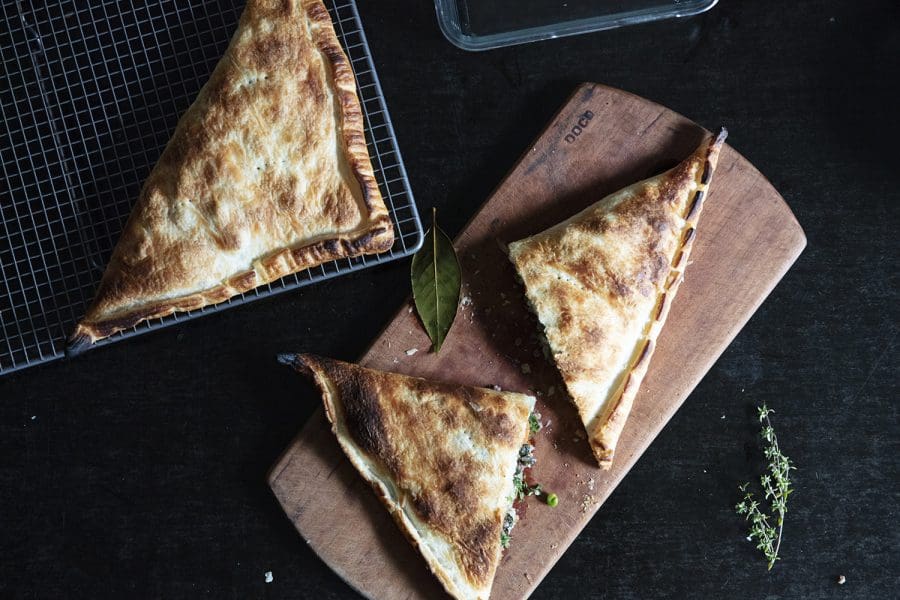
Mike’s Sweet Community Vermouth
Ingredients:
1.5l dry white wine (A dry Riesling from WA’s Great Southern should work great.)
3g dried wormwood
2g angelica root
1.5g coriander seed
1.5g green cardamom
1g allspice berries
1g gentian root
1g dried chamomile
1g dried sage
1g liquorice root
1g pink peppercorns
3 cloves
1 organic orange peel
½ organic lemon peel
1 x 7cm quill of cassia bark
2 x 7cm quill of cinnamon
1 pinch of saffron
1 cup sugar
1.5 cups port
1 cup sherry
Directions:
Making a herbed base: combine herbs and spices with 250ml of wine in a small pot and bring to a boil. Turn down heat and simmer for 5 minutes. Remove from heat and allow to cool to room temperature. Once cool, add contents of herbed wine to a 4l jar. Add additional 750ml of wine and let steep for 3-5 days depending on taste.
Making caramel: put sugar into a large skillet and place on medium-high heat. Once the sugar begins to brown turn down the heat and keep an eye on the caramelisation process – the sugar will burn if you’re not careful. If need be, you can stir the caramel with a heat-safe spatula. Bring the caramel to a light amber and then remove from the heat – it should continue to cook with the remaining heat in the pan. Bring the caramel to a darker copper colour, but be sure to avoid charring. Once ready, add the remaining 500ml wine to the caramel. Be careful – this will likely sputter. If the sugar crystalizes initially, don’t worry – it will eventually dissolve in the wine. Let cool to room temperature.
Forming the vermouth: strain the solids from your herbed wine using a sieve or piece of cheesecloth. Add cooled caramel, port, and sherry and stir. You can rebottle your vermouth in the bottles the wine originally came in.
Use and storage: vermouth keeps better in the fridge. This recipe makes enough vermouth for at least two households, so be sure to share it with your friends and neighbours. Works great in Manhattans, Negronis, and other cocktails that benefit from a herbaceous punch.


Mark’s Coffee Brewing Recipe
Equipment:
– Ceramic V60
– 360ml server
– Filter paper
– Grinder (I use Comandante, which has a very even grind)
– Digital scales with timer
– Gooseneck kettle
– Ceramic cup
Ingredients:
20g freshly ground light roast beans (I’m currently using beans from a micro-farm in Benguet (a mountain province in the Philippines, elevation 1450-1550 MASL, natural process, mixed Typica) which I roast using a handheld ceramic roaster)
300ml filtered water at 91C
Brewing time: approx. 3.5 mins
Method:
1. Place the 360ml server, the V60 dripper and filter on the scales, pre-wet the filter (this is to remove the papery flavour of the filter), discard the water.
2. Put 20g of ground coffee into the filter (I set the grinder to medium coarse, to get a texture similar to table salt) and tare the weight.
3. Brewing:
My recipe is based on the 4:6 method by Tetsu Kasuya. This method involves 5 pours, with the water in the first 2 pours amounting to 40% and in the last 3 amounting to 60%. The first 2 pours are important for adjusting sweetness and acidity, while the last 3 determine the strength.
· First Pour – blooming: pour 40g of water and stir. The duration of the first pour should be about 30 seconds, but this depends on the freshness of the beans. I do 30 seconds if it is 3-4 days after roasting. Any earlier and I bloom it longer).
· Second pour: 80g of water over 45 seconds or so
· Third to sixth pour: 60g of water over 45 seconds or so for each pour
4. Serve, preferably in a ceramic cup (I go so far as to pair my cup with the character of the coffee. Most often I choose one of my anagama fired ceramic cups from the Philippines.)
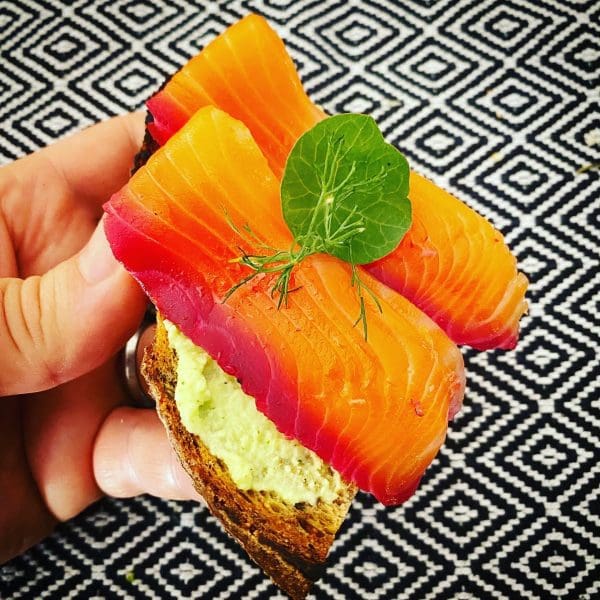
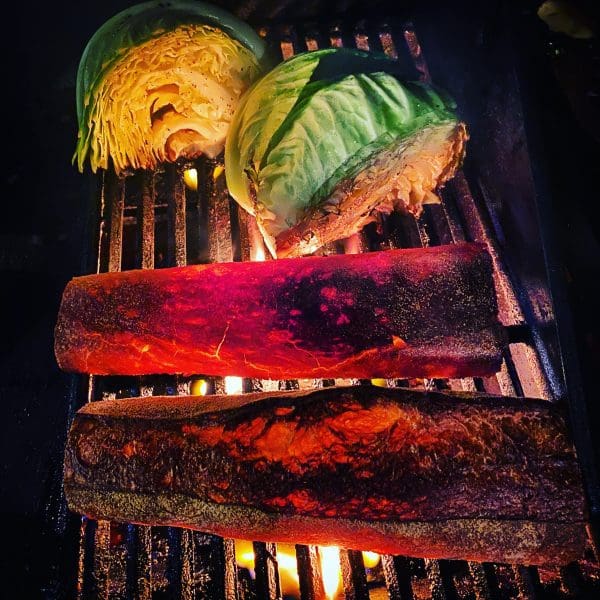

Please note: Mike Bianco’s recipe for Sweet Community Vermouth is designed to be shared.
To reduce the risk of alcohol-related harms such as accidents, illness and injuries, the Alcohol and Drug Foundation’s advice includes:
-Stick to The National Health and Medical Research Council’s draft National Guidelines, which recommend no more than 10 standard drinks per week and no more than 4 standard drinks on any day to reduce the risk of harm from alcohol-related disease or injury
-Don’t drink on an empty stomach. Alcohol takes longer to be absorbed by the body when there is food in the stomach
-Keep hydrated by drinking water or other non-alcoholic drinks between alcoholic beverages
-Avoid mixing alcohol with other drugs such as party drugs or pharmaceuticals
-Don’t drink and drive. Alcohol affects your ability to drive safely.